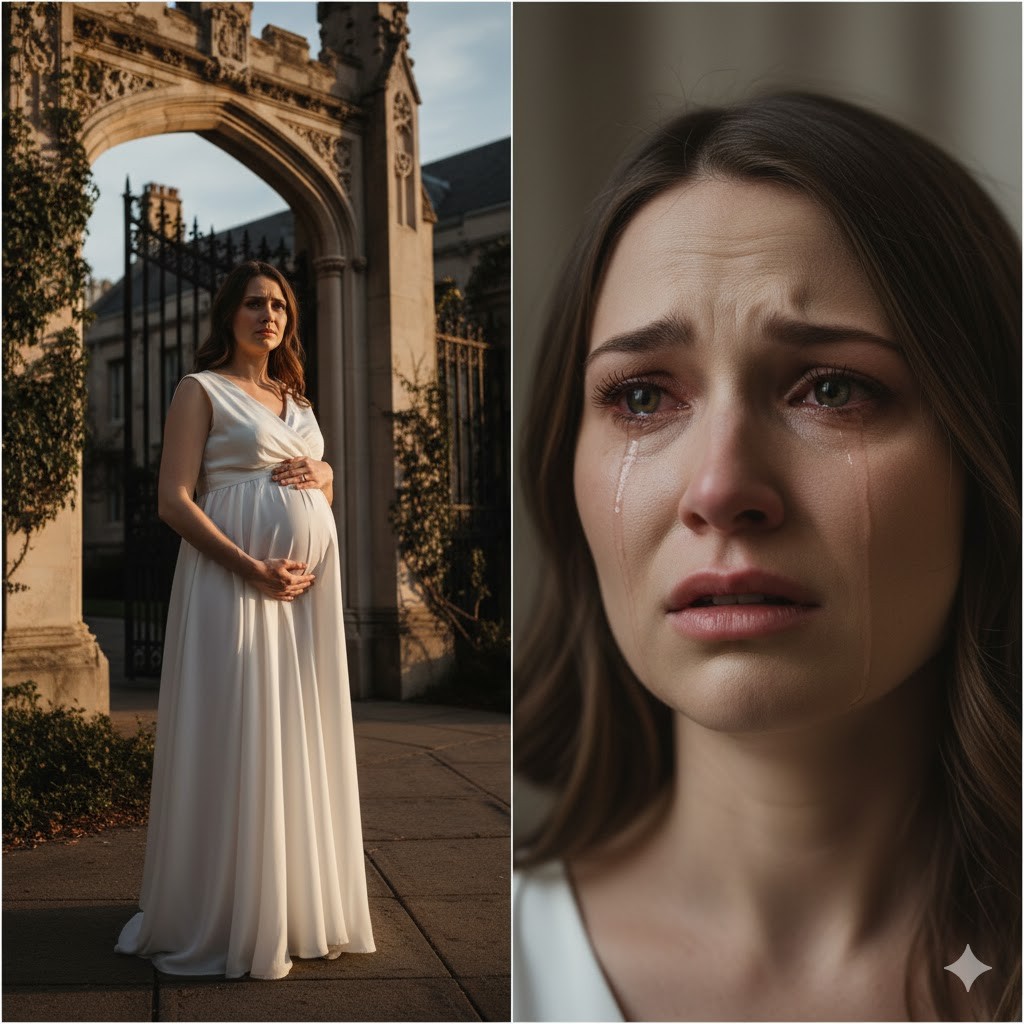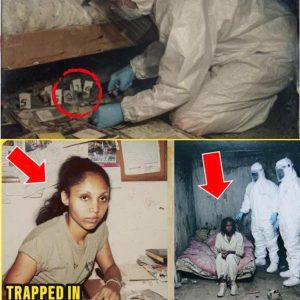Pregnant Student Missing, Family Thought Dead: 12 Years Later, an Orphan Uncovers a Heartbreaking Truth.
It was a stifling summer afternoon twelve years ago, in the quiet suburbs of Savannah, Georgia.
On the small wooden porch of a modest suburban home, Margaret Lane sat silently, her wrinkled hands clutching the edge of her chair. Her heart felt heavy, as if the air had stopped moving.
Her only daughter, Hannah Lane—a bright, gentle seventeen-year-old high school student—was missing.
And she was pregnant.
That day, Hannah told her mother she was going to meet her classmates to study for an upcoming exam. She never came home.
At first, Margaret thought it was a misunderstanding—maybe Hannah had gone to a friend’s house. But as midnight came and went, fear began to pour in like cold water.
She called the police. She printed missing posters. She searched hospitals, bus stops, even remote country roads where only crickets chirped.
But Hannah was missing.
The town whispered.
“The girl ran away. She couldn’t stand the humiliation.”
“Her boyfriend must have dumped her. Poor girl—she couldn’t take it.”
Every word was like a knife cutting deep into Margaret’s chest.
Her daughter—kind, shy, and full of promise—was now just a rumor.
Every night, Margaret sat on that porch, waiting, praying for a voice to break the silence:
“Mommy, I’m home.”
But it never came.
And as the seasons changed, hope faded into silent resignation.
The police closed the case after two years. Her husband died soon after, devastated.
In the Lane family’s small house, the name Hannah was only a whisper in prayers.
Every year on her birthday, Margaret would place a bowl of white rice and a candle on the table—for the daughter she believed was dead.
Twelve years later, time had turned Margaret’s hair silver.
She joined a church charity group that regularly visited St. Mary’s Children’s Home, a small orphanage on the outskirts of Atlanta.
That spring afternoon, she walked through the laughter-filled hallways, holding small boxes of candy for the children.
Then, a skinny boy caught her eye.
He was about eleven—pale skin, dark brown eyes, and a strangely familiar gaze.
The boy looked up at her shyly as she approached.
Margaret knelt down and handed him a cupcake.
“What’s your name, honey?”
“Eli,” the boy said softly. “I don’t know who my parents are. The sisters here say my mother… she died giving birth to me.”
Margaret was stunned. Her hands were shaking, the cupcake nearly falling to the floor.
The words—“my mother died giving birth to me”—felt like a thunderbolt to her heart.
She sat down next to the boy, her voice trembling.
“Do you know… your mother’s name?”
Eli thought for a moment, then answered, “They kept a piece of paper for me. It said my mother’s name was Hannah.”
The world seemed to stop spinning.
Margaret felt her breath leave her.
She turned to the nearby nun—Sister Agnes, who had been at the orphanage for decades.
“Yes,” Sister Agnes said softly. “One night, he was left on our porch—a newborn, wrapped in an old blanket. There was a piece of paper with only a name on it: Hannah. No last name, no address. The woman who brought him said the mother had died in labor.”
Margaret’s eyes filled with tears.
Her trembling fingers touched the boy’s cheek—the same shape of his chin, the same dimple when he smiled weakly… just like Hannah.
Could it be?
After twelve years of suffering, could this boy be her grandson?
That night, Margaret couldn’t sleep.
She called the police station that had handled Hannah’s case. After weeks of waiting, she finally convinced a police officer to reopen the missing persons file—just to compare DNA from the remaining blood found on Hannah’s old comb.
Three weeks later, she got the call.
Her hands shook as she answered.
“Mrs. Lane,” the voice said, “the DNA test is in. The boy… Eli… is your grandson.”
Margaret burst into tears.
Hannah did not run away.
She was not ashamed.
Somewhere out there, she had given birth—alone, scared, and probably in pain—but had lived long enough to bring her child into this world.
And then…

It was a suffocating summer afternoon in the suburbs of Savannah, Georgia, twelve years ago, when seventeen-year-old Hannah Lane vanished without a trace.
Her mother, Margaret Lane, still remembers the moment she last saw her daughter standing on their wooden porch—sunlight flickering across her soft face, a school bag slung over her shoulder.
Hannah had said she was going to study with friends.
She never came home.
The Disappearance That Shattered a Family
When the police first arrived, they found no sign of foul play—no struggle, no clues, no witnesses.
But what they did know was that Hannah was pregnant.
Her mother discovered the truth only after her disappearance. In the small town of Savannah, whispers grew like weeds:
“She ran away in shame.”
“Her boyfriend must’ve dumped her.”
“The poor girl couldn’t take it.”
Margaret searched hospitals, bus stops, and back roads for months. Every night, she sat on her porch waiting—hoping her daughter’s voice would call out through the dark.
But the nights turned to weeks, and the weeks to years.
After two years, the case went cold. Hannah’s father died soon after—heartbroken. Margaret aged overnight, and silence filled the Lane house.
Each year on Hannah’s birthday, Margaret lit a candle and placed a bowl of white rice on the table—for the daughter she believed was gone forever.
A Chance Meeting at the Orphanage
Twelve years later, time had gentled Margaret’s grief into quiet endurance.
One spring afternoon, while volunteering with her church group at St. Mary’s Children’s Home near Atlanta, she handed out candies and cupcakes to the orphans.
That’s when she saw him.
A boy—skinny, dark-eyed, around eleven years old—sitting alone near the window. There was something hauntingly familiar about him.
She knelt beside him and offered a cupcake.
“What’s your name, sweetheart?”
“Eli,” he replied softly. “I don’t know who my parents are. The sisters say my mother died giving birth to me.”
Margaret froze. Her breath caught in her throat.
The boy’s gaze—gentle yet sad—was unmistakable. He had Hannah’s eyes.
She whispered, “Do you… do you know your mother’s name?”
Eli thought for a moment.
“They said there was a piece of paper with me when I was found. It said my mom’s name was Hannah.”
The Truth Resurfaces
Margaret’s trembling hands nearly dropped the cupcake.
The nun, Sister Agnes, confirmed the story.
“He was left here one night—just a newborn, wrapped in an old blanket. A woman dropped him off and said the mother had died in labor. We only found the name ‘Hannah’ on the note.”
That night, Margaret couldn’t sleep.
She contacted the Savannah police department, begging them to reopen her daughter’s case. After persistent requests, they agreed to run a DNA test—comparing Eli’s sample with a lock of hair from Hannah’s old comb that Margaret had kept all these years.
Three agonizing weeks later, the call came.
“Mrs. Lane,” the officer said gently, “the results are in. The boy… Eli… is your grandson.”
A Mother’s Love Lives On
Margaret broke down in tears.
Twelve years of torment dissolved in an instant of revelation—her daughter hadn’t abandoned her family in shame. She had fought to bring her child into the world, likely dying in the process.
Hannah had kept her promise to protect her baby, even if it cost her life.
That spring, Margaret began the process of adopting Eli. She visited him every Sunday, bringing homemade cookies and photo albums filled with pictures of the mother he’d never met.
When Eli asked one day, “Was my mom a good person?”
Margaret smiled through her tears.
“She was the bravest soul I’ve ever known.”
Twelve years after vanishing, Hannah Lane’s story became one not of scandal or shame—but of sacrifice, love, and a mother’s final act of grace.





